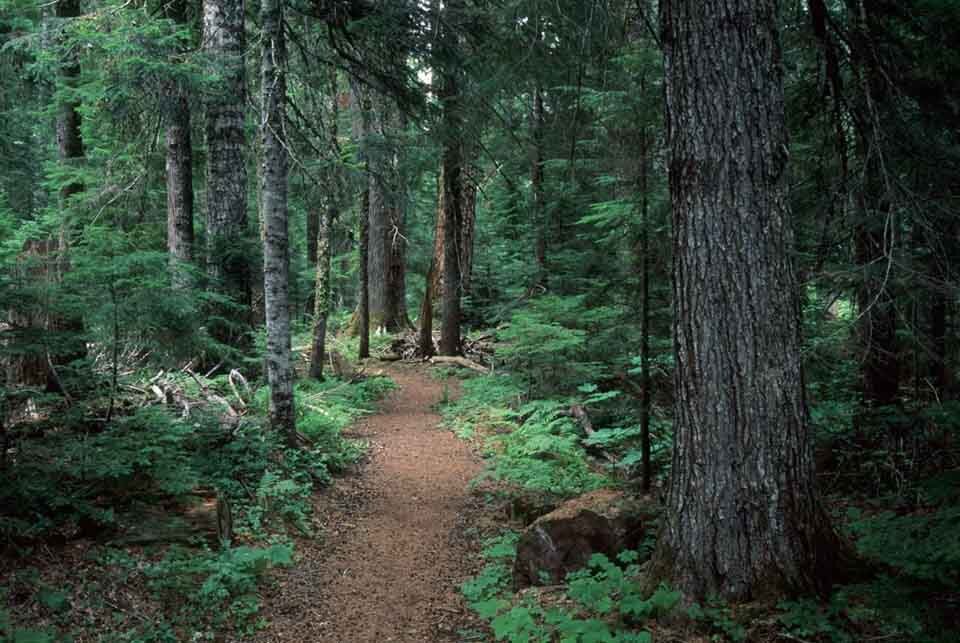Federal Protection of Old Growth Forests in Oregon Extended

Five amendments to the Northwest Forest Plan- encompassing 20 million acres in 17 national forests in Oregon, Northern California, and Washington were disclosed last week. Approved in 1994, the initial plan was drafted on account of lawsuits brought under the Endangered Species Act.
Alleging that unsustainable logging had led to the reduction and loss of critical wildlife species- including the Northern spotted owl which is dependent on old-growth and mature forests for nesting, the plan achieved success. Conserving old-growth forests improves the environment for aquatic, ground, and aerial species.
Almost 30 years later, forests have been increasingly threatened by wildfires, drought, invasive pests, and disease- with climate change putting them under further pressure.
Alexi Lovechio, climate program manager with Klamath-Siskiyou Wildlands Center, a non-profit conservation group based in Ashland believes this necessitates an update to the 1994 forest management plan. “Since 1994, our environment has changed and new scientific data has emerged,” Lovechio said, observing that we now know far more about climate change and its effects on the severity of wildfires, water quality, and wildlife’s immediate environment. Using newly acquired knowledge, these amendments make a significant contribution.
Disclosing the process officials would take to amend the Forest Management Plan, the recent announcement included details from the Forest Service. This will affect the individual plans of each of the 128 agency’s forests and grasslands- including the Northwest Forest Plan which governs the federal forests in Oregon, Northern California, and Washington.
Applicable nationally and locally in the NorthWest, the amendments are aimed at bolstering the health of forests by combating climate change to increase the protection afforded to the remaining old-growth trees which are under threat due to wildfires, diseases, and drought. Mostly located throughout the West, America’s oldest trees will enjoy additional safeguards against climate change and wildfires from the US Forest Service through the expanded plan.
Differentiating between old-growth and mature trees, the plan highlights the protection of old-growth trees. The U.S. Department of Agriculture disclosed that 25% of all old-growth trees are located in over 20 million acres of federal forests and grasslands that are situated in the Southern 48 states. Protected by the Northwest Forest Plan, the 10 national forests span 16 million of these acres.
“Old growth” is a term referring to tree stands and their surrounding environment- where it has not been subjected to significant human-created change for at least 100 years but defines different ages for disparate types of trees. Contained within healthy and assorted ecosystems, these environments are unaltered by not being tampered with.
Being in existence for almost a century, “Mature” stands contain large trees as compared to their younger counterparts, and have multi-layered canopies with surrounding healthy soil. Overseeing 72 million hectares (approximately 278,000 square miles) of forests, the U.S. Forest Service and the Bureau of Land Management’s authority extends to an area represented by the states of Vermont and Texas combined.
Detailing the difference, a recent inventory undertaken by these two departments listed 45% of these forests as “mature” and around 18% as”old-growth” trees. Situated primarily in the Western states of Oregon, Idaho, Montana, and California, some old-growth stands have remained intact east of the Mississippi River. The Forest Service has identified old growth in Arkansas, Kentucky, West Virginia, and New England, as well as around the Great Lakes.
Susan Jane Brown- attorney and founder of the Oregon-based legal nonprofit Silvix Resources, believes that crucial input was left out of the 1994 plan. “The 1994 plan was written without the government-to-government consultation with tribes, and as a result, there is no language at all in the plan about indigenous stewardship and uses of these lands,” She hopes to see a change to this exclusion in the new amendments.
Although changes to the forest plan restrict harvesting of timber in old-growth forests, on some mature stands in the NorthWest, logging will probably be permitted. Conservationists find this difficult to come to terms with but multiple uses are inescapable on sustainable federal forests.
Exercising multiple uses in the most ecologically sensitive manner- honoring historical and cultural traditions, is possible according to Brown. “I think that we can have timber harvests that focus on cutting the right trees in the right places for the right reasons,” she said.
Aligning with the Biden administration’s strategy to “ecologically manage,” reworking the federal forest plans will contribute to making the US’s forests more resilient to wildfires- and better isolate carbon dioxide that negatively affects climate change. Absorbing warming carbon dioxide, when cut or burned living trees release their CO² into the atmosphere. Contributing to the beneficial well-being of ecosystems- including soil, water, and air, these amendments allow improved efficiency in carbon and water storage, including for surrounding plants and trees.
By amending- rather than simply revising the plans, changes can be implemented more rapidly. With a 2025 deadline to finalize, environmentalists and conservationists have some hope that potential derailment by changes in presidential administrations will not derail the forest plan. By managing and preserving old-growth and mature forests, the five amendments provide some protection against climate change- and take cognizance of tribal input in forest management. Supported by their local rural economies, wildfires can be prevented and suppressed.
A printable version of the Forest Service is available here.

Comments are closed.